Star Wars Rogue Squadron: A Retrospective
Take a look back at development house Factor 5 and its involvement with the Rogue Squadron series.
You might think that, as a video game developer, being pigeonholed into making games based on the same license time and again would be a wearying experience. That is, of course, unless the license you're working with is Star Wars. Over the last few years, Marin, California-based Factor 5 has enjoyed a close and enviable relationship with LucasArts that's afforded it the opportunity to create several action games based on the hallowed film series, under the banner of Rogue Squadron. With the recent release of the third game in the series, Rebel Strike, we've had a bit of Rogue Squadron on the brain. So we'd like to share a little bit of the history behind Factor 5 and the Rogue Squadron series with you. We sat down for a few minutes with series director Julian Eggebrecht, producer Brett Tosti, sound director Rudolf Stember, and senior artist Bastian Hoppe to share their memories of working on one of the most prominent Star Wars series of games on the market.
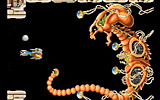
Factor 5 began to coalesce during the late 1980s as its founding members graduated from high school in Germany and discovered that game-making was their natural calling. Before the budding developers could land a deal, the friends had to prove their development mettle, and so they began their careers by crafting a home-brewed clone of the arcade shooter R-Type. That grassroots effort netted them both a lawsuit from R-Type's creator and an offer to assume official conversion duties for the game. Thus, Factor 5 was on its way.
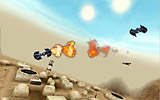
After a flirtation with the European console market involving the classic shooter series Turrican, Factor 5 became involved with LucasArts through rather fortuitous circumstances (Eggebrecht owed one of the company's employees money). The group started out making Indiana Jones' Greatest Adventures on the Super NES and later created Ballblazer Champions for the PlayStation. It wasn't until LucasArts desired a follow-up to its moderately successful Shadows of the Empire that Factor 5 first began work on the Star Wars series. The team had been crafting a prototype game engine that allowed for large-scale terrain maps, so, as Eggebrecht recalls, LucasArts said, "You've always wanted to work on that landscape thing, so why don't you do something with it?" At the time, however, LucasFilm wasn't keen on having games drawn directly from the Star Wars films, so Factor 5's initial pitch for a game that offered missions similar to fans' favorite Star Wars action sequences was shot down.
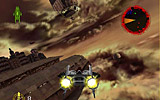
Then the group stumbled on a comic book named Rogue Squadron that was based on the elite group of pilots led by Luke Skywalker in the classic trilogy. Factor 5 set about creating a flight action game with an emphasis on original missions that would be set in the Star Wars universe and would focus on the elite team of pilots from the comic books. By all accounts, the development of the first Rogue Squadron was a little touch-and-go. Though the game would eventually ship for the 1998 holiday season, Rogue Squadron's E3 showing that year was a little frightening. As Tosti told us, the demo on display at the show was little more than a tech demo that could render a basic height map. It also showed an AT-AT model that was unable to move, and it had TIE Fighters with no AI that simply flew and fired over a predetermined path. Tosti said that by following a very specific flight path of his own, he could give the illusion that he was actually battling with the TIEs. Despite the ramshackle nature of the E3 demo, the response from gamers was largely positive. Newly invigorated, Factor 5 continued work on Rogue Squadron.
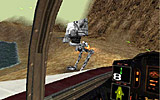
The guys at Factor 5 had a number of interesting stories to share about their first experience working with both Star Wars and Nintendo. The team wanted to use the Nintendo 64's memory expansion module to improve Rogue Squadron's graphics, but Nintendo was initially hesitant; Nintendo considered the technology reserved for new N64 hardware peripherals alone. But after Turok 2: Seeds of Evil used the expansion to achieve a higher resolution, Factor 5 was also allowed to up Rogue Squadron's graphical ante. Stember talked to us about working with the sound design in the first game, which was quite a step up from his days of crafting music and sound for the Amiga computer. In those days, only four voices were available for both sound effects and music playback, but on the N64, a whopping nine voices could be used for sound effects alone. Unfortunately, at the time, LucasFilm was wary of permitting the Star Wars library of sound effects to be used outside of the company, so it provided Stember with a meager assortment of sounds sampled at a mere 22 kHz (which is only half the sampling rate needed to achieve realistic sound). Stember found that the effects he had lifted from VHS tapes of the original movies for a previous project actually sounded better than the clips provided by LucasFilm.
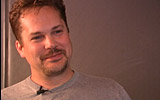
Factor 5 also wanted to include some elements from the upcoming Star Wars Episode I: The Phantom Menace, which was less than a year from release at the time of Rogue Squadron's development. Though art and design assets for the Naboo starfighter from the movie were available to the team, LucasFilm understandably didn't want any surprises from the new movie spoiled ahead of time. Select members of Factor 5 wanted to include the fighter in the game so badly that they vowed to bury it in such a way that nobody would possibly be able to find it. Even most members of the teams at Factor 5 and LucasArts were unaware of the Naboo fighter's inclusion in the game, so once Episode I was released, players and developers alike were surprised to be told about a little piece of extra content in the game. Of course, this new ship allowed for a whole new marketing push behind the game, too.
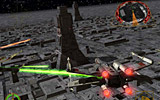
When the original Rogue Squadron was finally released late in 1998, it sold "about 100 times better than anybody expected," according to Eggebrecht. Though the next official sequel was still years off, Factor 5 immediately set about creating what it internally considered the follow-up to Rogue Squadron with Star Wars Episode I: Battle for Naboo, a similar shooter based on the ships and environments seen in the first Star Wars prequel film. The Rogue Squadron name would finally be reprised in a somewhat unexpected way when Nintendo began to shop its new system, the GameCube, to developers. Factor 5 jumped at the chance to create a Rogue Squadron sequel for the powerful new system, even though it meant committing to a bruising nine-month development schedule. Rogue Squadron II: Rogue Leader began life as a GameCube tech demo, and--indeed--it wowed audiences with an in-game scene, modeled after an extended shot from Star Wars, in which X- and Y-Wings begin their initial approaches on the Death Star. After the successful unveiling of both the GameCube and the Rogue Leader demo, Factor 5 had only to make a good game with the tools at hand.
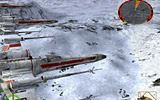
The development cycle for Rogue Leader may have been extremely short by industry standards, but at least Factor 5 had some powerful hardware and better tools to work with. Senior artist Bastian Hoppe told us that, at the beginning of the project, when the basic technology and framework were still being built, he spent around a month perfecting a new and highly detailed 3D model of the X-Wing fighter. However, toward the end of the project, when Factor 5 was in full-on "crunch" mode, new ship models were being produced in about a week's time. The team's artists had access to every available resource in building the new ships. They had the movies themselves, there were reference books containing cross-section diagrams, and even kids' toys were used to make the game's ship models as realistic as possible. On the sound front, Stember said that if the nine voices of the Nintendo 64 seemed expansive, the total of 64 for the GameCube were almost unthinkably large. A full 32 of these were available for sound effects alone, and, for the first time, there were actually too many sound effects going on in the game at once. A cloud of TIE Fighters would cause many sounds to overlap and cancel each other out, causing a grating clipping to occur. Of course, the biggest and most demanded feature in Rogue Leader was the addition of missions set in space, the implementation of which proved to be a challenge in itself. Finally, Factor 5 proved it could harness the strength of the GameCube when Rogue Leader was released, alongside the system, to critical acclaim and commercial success.
Of course, Factor 5 spent the two years following Rogue Leader working on Rebel Strike, the third Rogue Squadron title. You can find lots of info on the development of the game, including interviews and early footage, in our gamespace. What's next for Factor 5? No new announcements have been made yet, but we'll be watching the team, and its involvement with the Star Wars franchise, with great interest.
Special thanks to Ricardo Torres for his assistance with the concept and execution of this feature.
Got a news tip or want to contact us directly? Email news@gamespot.com
Join the conversation